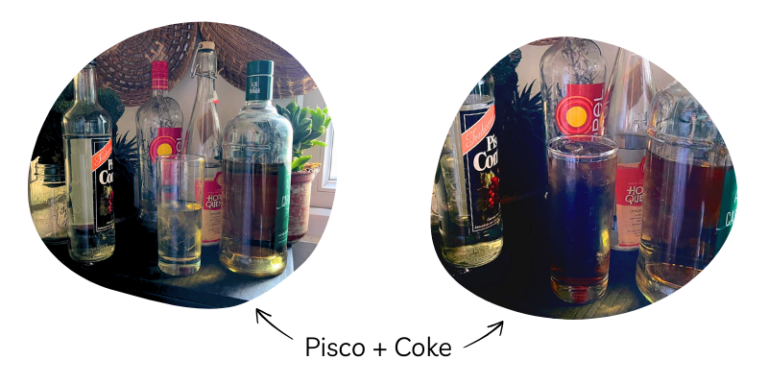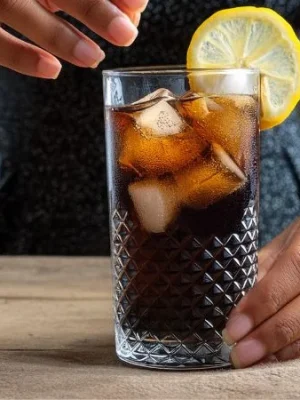Celebrating National Piscola Day (yes, we have a day for everything), this post is my way of exorcising the ghosts of my teenage liver. Chilean food and drink culture has evolved dramatically over the past 20 years, but back in the early 2000s, drinking felt like an extreme sport— and Piscola was my unconquerable adversary.
Fast forward to today, and Chile has embraced a more refined drinking culture. We now have mixologists, curated cocktail menus, and—believe it or not—measured pours at bars (not legally required here, but still a revelation). Whether it’s the country’s drinking habits maturing or just me growing up, Piscola—our national highball—has evolved too. Once a reckless shortcut to oblivion (imagine rum and coke, but stronger and less sickly sweet), it has now become a more balanced, if never exactly sophisticated, mixed drink. The difference? You actually get to choose the type of Pisco you want.
The name says it all: Pisco + Cola = Piscola. Purists insist that Coca-Cola is the only acceptable mixer, but others swear by their preferred brand. And for those of us who aren’t cola fans, there’s the infamous Piscola Blanca—Pisco with any kind of lemonade-style soda, a.k.a. my personal teenage tormentor.
These days, if you order a Piscola at a bar, you’ll likely be served a glass of ice, a measure of Pisco, and a separate can of soda so you can mix it to taste. If you’re lucky enough to have an old-school bartender, you might even be able to request an extra glass of ice to split your drink into two. But if you’re at a nightclub, party, or gig, beware: the old ways still reign supreme. The classic recipe? The cheapest, most punishing Pisco available, three ice cubes, and a pour of alcohol until the ice floats—that’s your “measure.” Top it off with a splash of mixer (it should resemble weak iced tea), maybe add a lemon wedge if you’re feeling fancy, and start reconsidering your life choices. Drink more than three, and you might as well book yourself a stomach pump in advance.

A Quick Pisco Primer
Pisco is a type of brandy, distilled from wine made with grapes primarily from the Limarí Valley. It carries a Denomination of Origin, meaning only Chilean Pisco can legally be called Pisco. But history, as always, complicates things. Pisco production dates back to colonial times, when Chile was still part of the Peruvian Viceroyalty. Given that historical overlap, it’s no surprise that both Chile and Peru claim ownership of the name—an ongoing controversy that sparks endless debate. Regardless of who “owns” it, one thing is clear: both countries produce fantastic versions of the spirit, offering the world an array of delicious drinks to explore.

Beyond Piscola: The Beauty of Pisco
All jokes aside, Pisco is an incredible and complex spirit. Aged varieties are best enjoyed neat or over ice, but it’s true magic shines in cocktails. It’s sharper and less sweet than rum, yet smoother and more aromatic than vodka, making it ideal for bright, palate-awakening drinks. My personal favorites include anything citrus-based (Ginger Pisco Sours forever!), but it also pairs beautifully with green apple, ají verde (a mild local chili), merkén (a traditional Mapuche spice), and fresher, floral liqueurs like elderflower.
If you’re in Valparaíso and want to dive into the world of Pisco, there’s an amazing Pisco bar I highly recommend. Just book our Valparaíso tour and let us know you want to visit—it’s easily worth adding to the itinerary!
To Piscola or Not to Piscola?
If you love fizzy drinks, strong booze, and aren’t afraid of a little recklessness, you’ll probably love Piscola. If, like me, you find some tonics too sweet and prefer your alcohol carefully measured, you might want to stick to cocktails. The best way to appreciate Pisco? Visit a few bars, try different expressions, and then bring a bottle home to experiment. Whether you’re mixing cocktails, spiking a ceviche, or (controversial take) adding a splash to a fruit salad, you’ll come to enjoy Pisco as much as we do.
Drink wisely—your liver will thank you.
By Francisca Alsua
